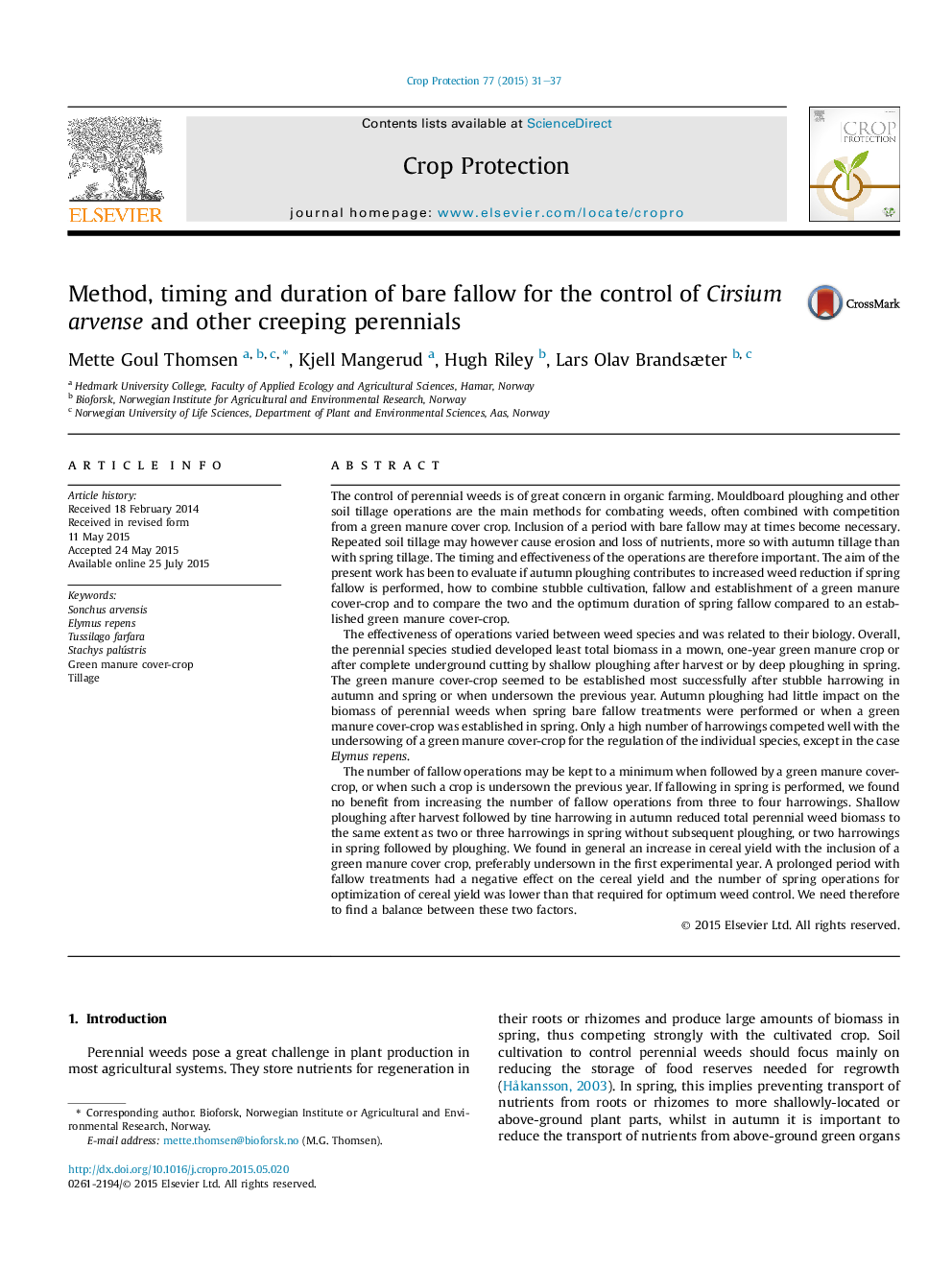| Article ID | Journal | Published Year | Pages | File Type |
|---|---|---|---|---|
| 4505638 | Crop Protection | 2015 | 7 Pages |
•Autumn ploughing does not increase weed reduction when spring fallow is used.•Three spring fallow harrowings are enough or less if followed by a cover crop.•Cereal yield increases with use of cover crop and drops with prolonged fallow.•Minimize tillage for balance between weed regulation, nutrient supply and yield.
The control of perennial weeds is of great concern in organic farming. Mouldboard ploughing and other soil tillage operations are the main methods for combating weeds, often combined with competition from a green manure cover crop. Inclusion of a period with bare fallow may at times become necessary. Repeated soil tillage may however cause erosion and loss of nutrients, more so with autumn tillage than with spring tillage. The timing and effectiveness of the operations are therefore important. The aim of the present work has been to evaluate if autumn ploughing contributes to increased weed reduction if spring fallow is performed, how to combine stubble cultivation, fallow and establishment of a green manure cover-crop and to compare the two and the optimum duration of spring fallow compared to an established green manure cover-crop.The effectiveness of operations varied between weed species and was related to their biology. Overall, the perennial species studied developed least total biomass in a mown, one-year green manure crop or after complete underground cutting by shallow ploughing after harvest or by deep ploughing in spring. The green manure cover-crop seemed to be established most successfully after stubble harrowing in autumn and spring or when undersown the previous year. Autumn ploughing had little impact on the biomass of perennial weeds when spring bare fallow treatments were performed or when a green manure cover-crop was established in spring. Only a high number of harrowings competed well with the undersowing of a green manure cover-crop for the regulation of the individual species, except in the case Elymus repens.The number of fallow operations may be kept to a minimum when followed by a green manure cover-crop, or when such a crop is undersown the previous year. If fallowing in spring is performed, we found no benefit from increasing the number of fallow operations from three to four harrowings. Shallow ploughing after harvest followed by tine harrowing in autumn reduced total perennial weed biomass to the same extent as two or three harrowings in spring without subsequent ploughing, or two harrowings in spring followed by ploughing. We found in general an increase in cereal yield with the inclusion of a green manure cover crop, preferably undersown in the first experimental year. A prolonged period with fallow treatments had a negative effect on the cereal yield and the number of spring operations for optimization of cereal yield was lower than that required for optimum weed control. We need therefore to find a balance between these two factors.
